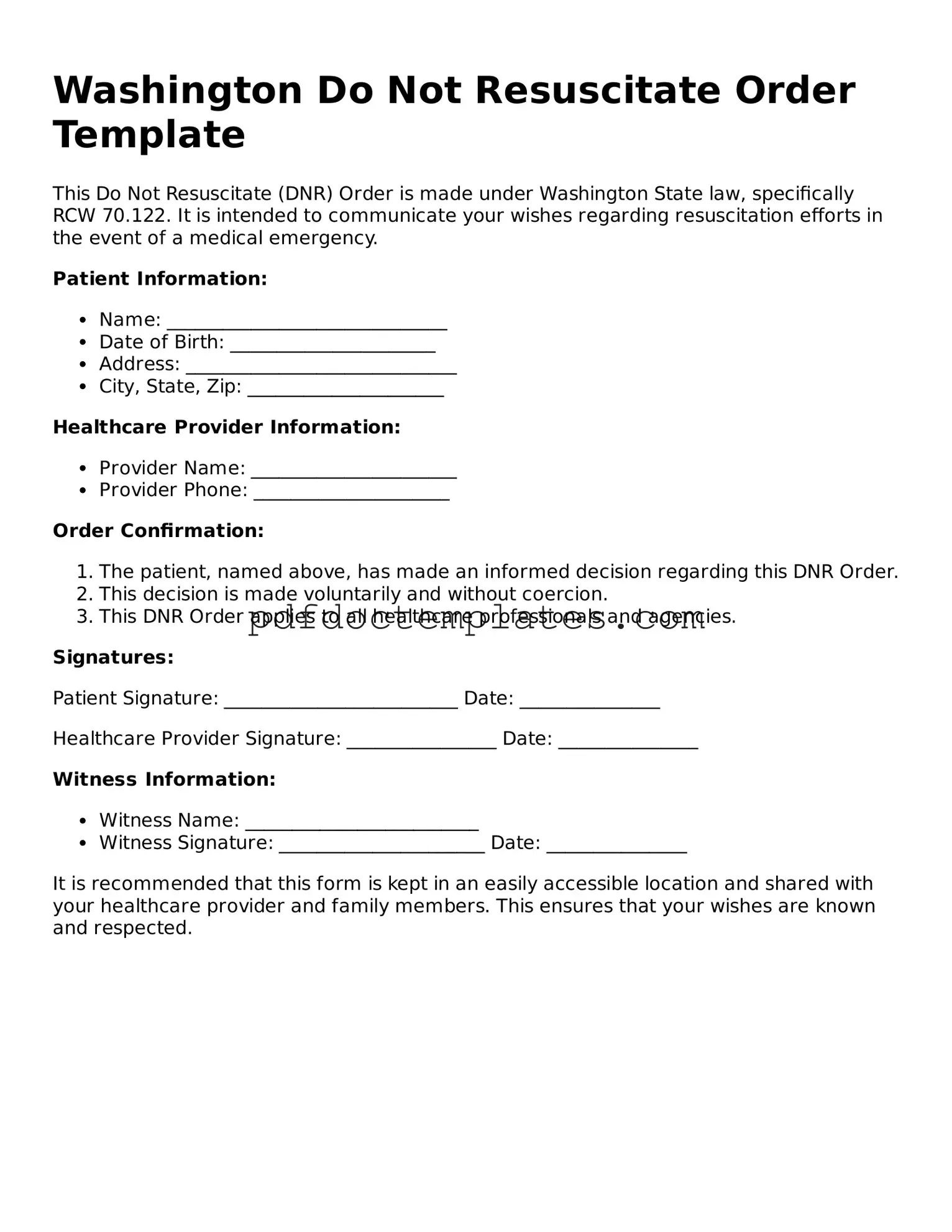Blank Do Not Resuscitate Order Document for Washington
A Washington Do Not Resuscitate Order (DNR) form is a legal document that allows individuals to express their wishes regarding resuscitation efforts in the event of a medical emergency. By completing this form, patients can ensure that their preferences are respected when it comes to life-saving measures. Understanding the importance of this document can provide peace of mind for both patients and their families.
If you’re ready to take control of your healthcare decisions, fill out the form by clicking the button below.
Access Your Document
